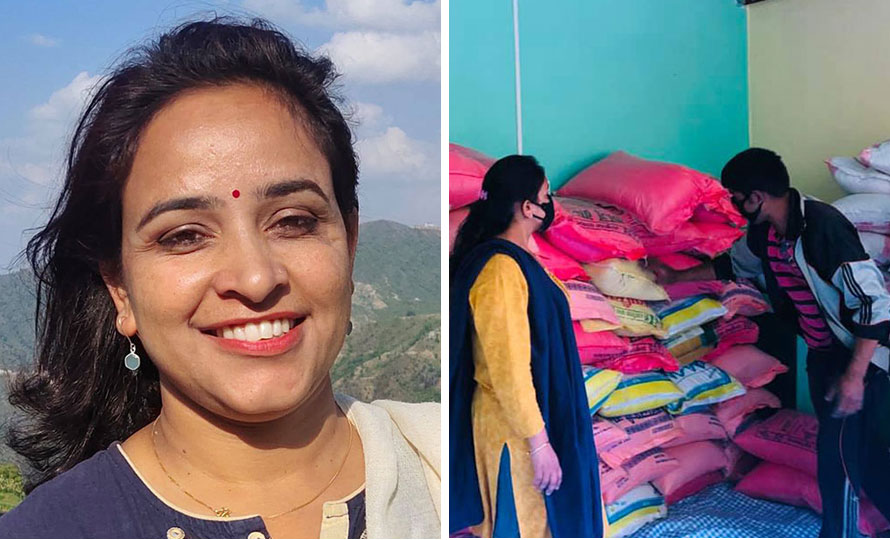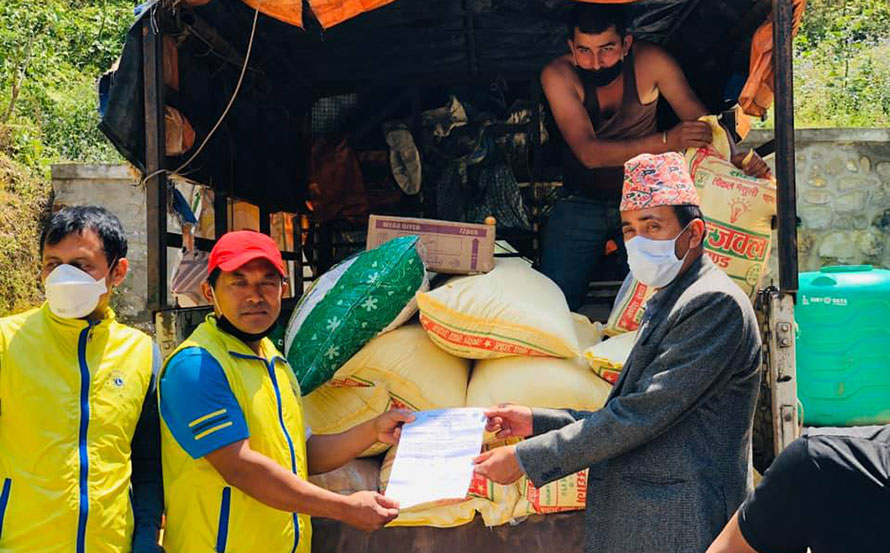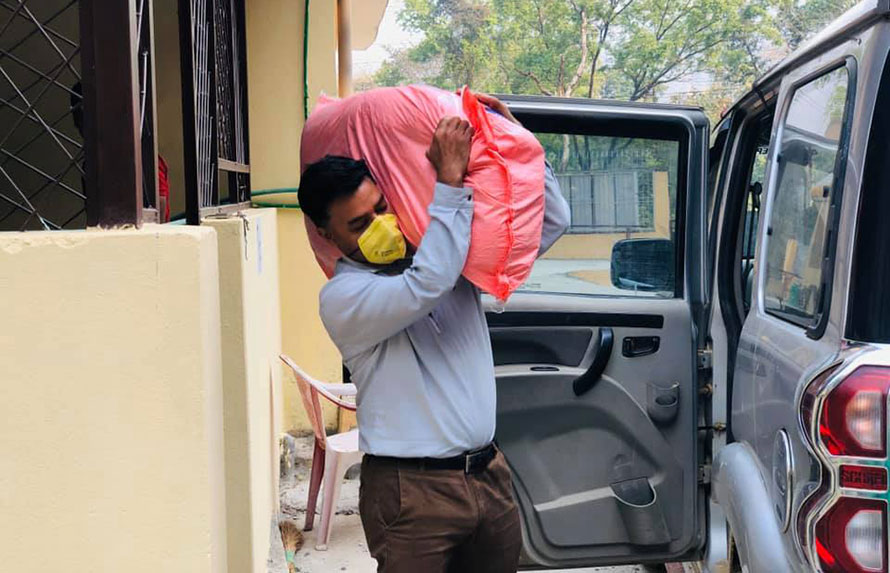
A picture showing this text written on a white paper and pasted on a shutter of a shop with packed food grains beneath is viral on social media these days. When this photo taken at Kerabari in Morang of eastern Nepal went viral, Sita Dhungana, the vice-chairperson of Gajuri rural municipality in Dhading of central Nepal is busy responding to people curious about her similar initiative over the phone.
“Positive efforts are spreading across the country. People are telling me ‘congratulations’ and ‘thank you’ for an initiative we launched to provide food to the needy during this Covid-19 crisis,” Dhungana says.
Interestingly, she was unaware that the photo that had gone viral on social media. She says she learned about the picture only after Onlinekhabar told her so.
After the government announced a nationwide lockdown on March 24, people walked hundreds of kilometres to reach home. Long lines of those returning home from Kathmandu, their tired and hungry faces were all over the media. Social media users demanded the state provide relief to the poor. Dhungana, as an elected people’s representative, was worried about them.
“In my rural municipality adjacent to Prithvi Highway, there are many who cannot earn enough to manage two meals a day. There are many who returned their homes from the cities after losing their jobs. I got worried for them,” shares Dhunagana.
While thinking that the crisis led many families to hunger, a new idea hit her mind – to create an environment of private and institutional support. People would question the transparency of her initiative if she asked them to donate money. Therefore, she thought of asking people who can give to donate food for the needy.
She named the campaign ‘Food Bank’ with a plan to move it forward in an institutional manner by mobilising it from her rural municipality.
The modern form of Dharma Bhakari

She says there used to a big ‘Dharma Bhakari’ at the centre of the village in the past. There, those who had something to donate were allowed to donate and those who did not have were allowed to take from there. This system which was useful during floods, landslides, fires, famines and droughts discontinued after the establishment of the multi-party system in 1990.
While studying about it, she found that the village panchayat used to deploy staff in the operation and maintenance of Dharma Bhakari. Likewise, those taking food from the store had to return it; a failure to do so would be considered a sin.
Then, she concluded that a sophisticated food collection and distribution centre was needed for the new generation, which has been battling this pandemic after decades.
Consensual leadership

Along with Dhugana as the chairperson, four ward chairpersons became members of the committee. Likewise, there were three other members representing three major political parties in the rural municipality.
Likewise, the rural municipality also formed a monitoring committee led by the chairman of the rural municipality, including chairman of the food and nutrition security committee under the rural municipality, chief administrative officer and representatives of political parties who were not the members in the food bank committee.
Local officials had thought that the target group of the food bank would include the people who would sell oranges, cucumbers and fish on the highway, who would extract sand from nearby rivers, and those living in upper hilly areas who were facing the food crisis. Considering that this was the best option for the unorganised labourers and the poor of their area, the committee led by Dhungana also formulated a working procedure for the operation of the food bank.
Operation procedure
As per the working procedure, only five types of items–rice, pulses, salt, oil and soap–are accepted from the donors. Similarly, on the recommendation of the Disaster Management Committee at each ward level, each person can take food required for a maximum of 12 days.
There is a procedure to distribute four kilograms of rice for one individual of the family. It means, if there is a family of four, 16 kilos of rice, accordingly pulses, oil, salt and soap from the bank are distributed to them for every 12 days.
A person who has received relief once is not allowed to seek relief for the next 12 days except in case of emergency.
Appeal for support
Soon after the municipal meeting on April 2, the rural municipality made a public appeal asking for assistance for the food bank. An office was also set up at the rural municipality office to manage the food bank.
Dhungana also wrote about the opening of the food bank on her Facebook timeline and appealed to people for help. She says that when the news about the food bank came in the media, there was an outpouring of donations.
On April 4, the bank received its first donation: five bags of rice. Likewise, Milan Pathak of Makawanpur asked to send money from Hetaunda to the bank account of a vendor in Gajuri and deposit his donations in the food bank. Likewise, Pradeep Sharma, a Sanskrit student in Banaras, also did the same. Dhunagana remembers that Bhuvan Gurung, who lives in Dubai, also helped the food bank by raising money by running the campaign.
From April 5till date, the bank has received support from more than 70 organisations and individuals. The food bank operating committee has stated that 3,200 families have directly benefitted from this system. The rural municipality has also allocated some budget in the policy and programme of this current fiscal year.
Dhungana informs that the rural municipality is continuing the programme and including flood and landslide victims as well.
Spreading inspirations
Dhungana has written articles about the food bank in various local newspapers. Also, various articles about her work have been published in the media. Meanwhile, officials from many local units across the country have appreciated her work and expressed willingness to replicate the model. They have also sought her help.
No comments:
Post a Comment